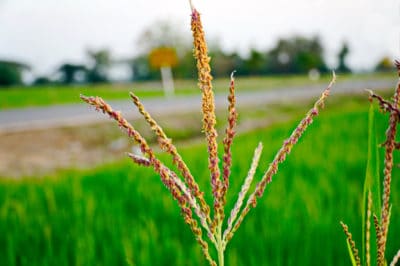What IS That Thing Growing on the Top of My Corn?
At approximately 50 days after planting corn, depending on the variety, you will notice a tall, thin growth coming out of the top of your corn stalk. It starts as one shoot, then rapidly grows additional shoots which have a feathered appearance. The entire part is called the tassel and indeed looks like a tassel you might find at the end of a pull cord.
What is The Purpose of a Corn Tassel?
Although the tassels on your corn have their beauty, their purpose is far more than ornamental. The corn tassel is the male reproductive organ of a corn plant, so without it, your corn will not pollinate.
If you look closely at the tassel, you will notice that each frond is covered with a powdery yellow substance. This is the pollen, without which your corn will not produce ears. The pollen from the tassel is blown onto the silk, and the ear is fertilized.
Do I Need to Do Anything With the Tassel?
The practice of detasseling corn involves pulling the tassel off of select corn plants to prevent pollination. Unless you are growing seed corn to plant the following year, there is no reason at all to detassel your corn. In fact, you might lose out on a good crop of sweet corn if you do, since pollination will not occur.
Instead, just let the wind pollinate your rows of corn and do not worry about the tassel. People have been growing corn for centuries without doing anything more than planting the seeds and taking care of them correctly.
Problems with Corn Tasseling
Occasionally, corn can tassel too early, before the silk begins to form. This can result in lower pollination rates, which will decrease your overall yield. The most common reasons corn tassels too soon are:
- Planting too early, so the corn is exposed to cold temperatures.
- Lack of nutrients, which means you have not adequately fertilized the corn
- Prolonged periods of hot, dry weather with not enough water.
To prevent early tasseling, be sure to plant your corn when the temperatures are warm enough to allow the corn to germinate within 7-10 days. Additionally, be sure you are applying fertilizer frequently and providing ample water when the days are hot and dry. By taking proper care of your corn plants, you can almost guarantee that they will thrive.
